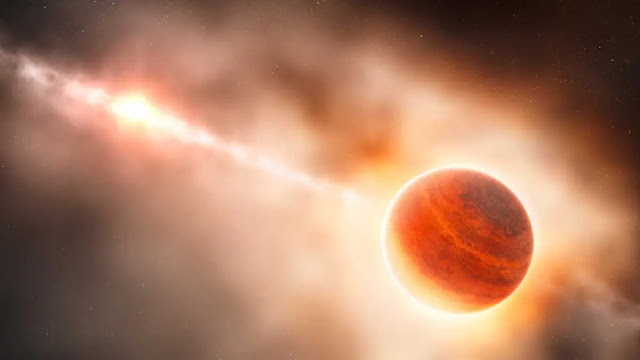The formation of distant alien worlds can teach us a great deal about the formation of our own solar system.
Planets form in massive disks of dust and gas known as
protoplanetary disks.
While scientists have imaged dozens of these disks in the
past, they have only directly observed two planets in the formation process.
Now, a team of scientists hopes to dramatically increase
this number using the James Webb Space Telescope.
To do so, they have trained its instruments on
protoplanetary disks that were previously imaged by telescopes like Hubble.
They haven’t observed a forming planet yet, but they will
hope it’s only a matter of time. Webb is, of course, designed to peer through
massive veils of cosmic dust.
Searching for newly-formed planets
The scientists combined images captured by James Webb with
previous observations made by the Hubble Space Telescope and the Atacama Large
Millimeter Array (ALMA). Their results are published in three different papers
in The Astronomical Journal.
They captured images of protoplanetary disks HL Tau, SAO
206462 and MWC 758. Based on the Hubble and ALMA observations, they hoped to
capture nascent planets using Webb. While they didn’t directly observe a
newly-formed planet, their observations surprised them.
“Several simulations suggest that [a] planet should be
within the disk, massive, large, hot, and bright. But we didn’t find it. This
means that either the planet is much colder than we think, or it may be
obscured by some material that prevents us from seeing it,” Gabriele Cugno, a
co-author on all three papers, explained in a press release.
“What we have found is a different planet candidate, but we
cannot tell with 100% certainty whether it’s a planet or a faint background
star or galaxy contaminating our image. Future observations will help us
understand exactly what we are looking at.”
Understanding the role of Jupiter in our Solar System
The scientists have yet to directly capture a planet in the
formation process using James Webb, but they will keep trying. To be precise,
they hope to find Jupiter-like planets that could shed new light on our own
solar system.
“Only about 15 percent of stars like the sun have planets
like Jupiter. It’s really important to understand how they form and evolve, and
to refine our theories,” explained University of Michigan astronomer Michael
Meyer.
Understanding how protoplanetary disks interact with
newly-formed gas giants will help scientists better understand Earth’s
evolution. That’s because Jupiter has played a key role in our Solar System.
“Some astronomers think that these gas giant planets
regulate the delivery of water to rocky planets forming in the inner parts of
the disks,” Meyer continued.
While Webb has yet to directly observe a forming planet, its
NIRCam infrared light imager can detect the thermal radiation of planets. It
can even do so if they are shrouded in cosmic dust.





0 Comments